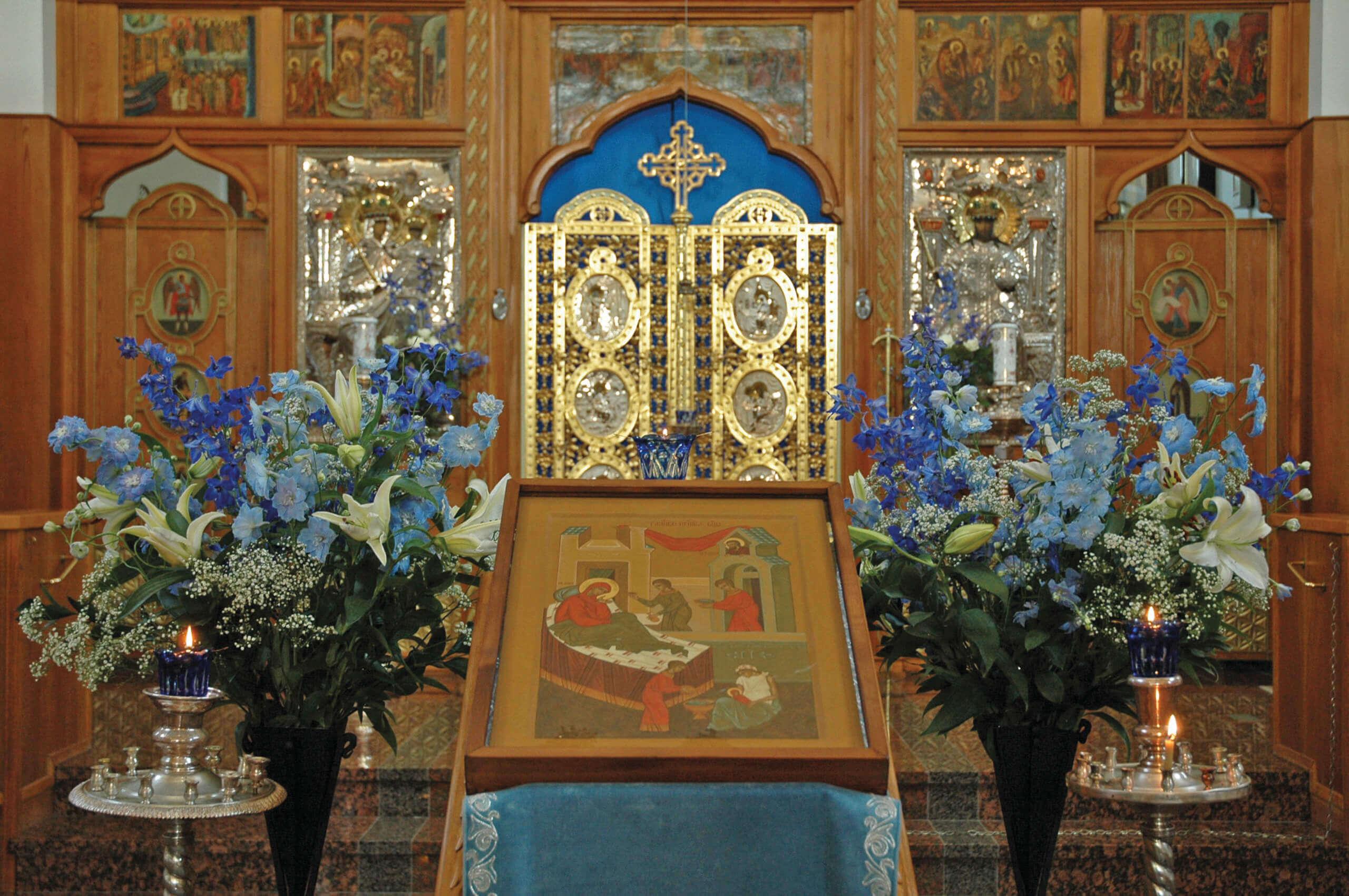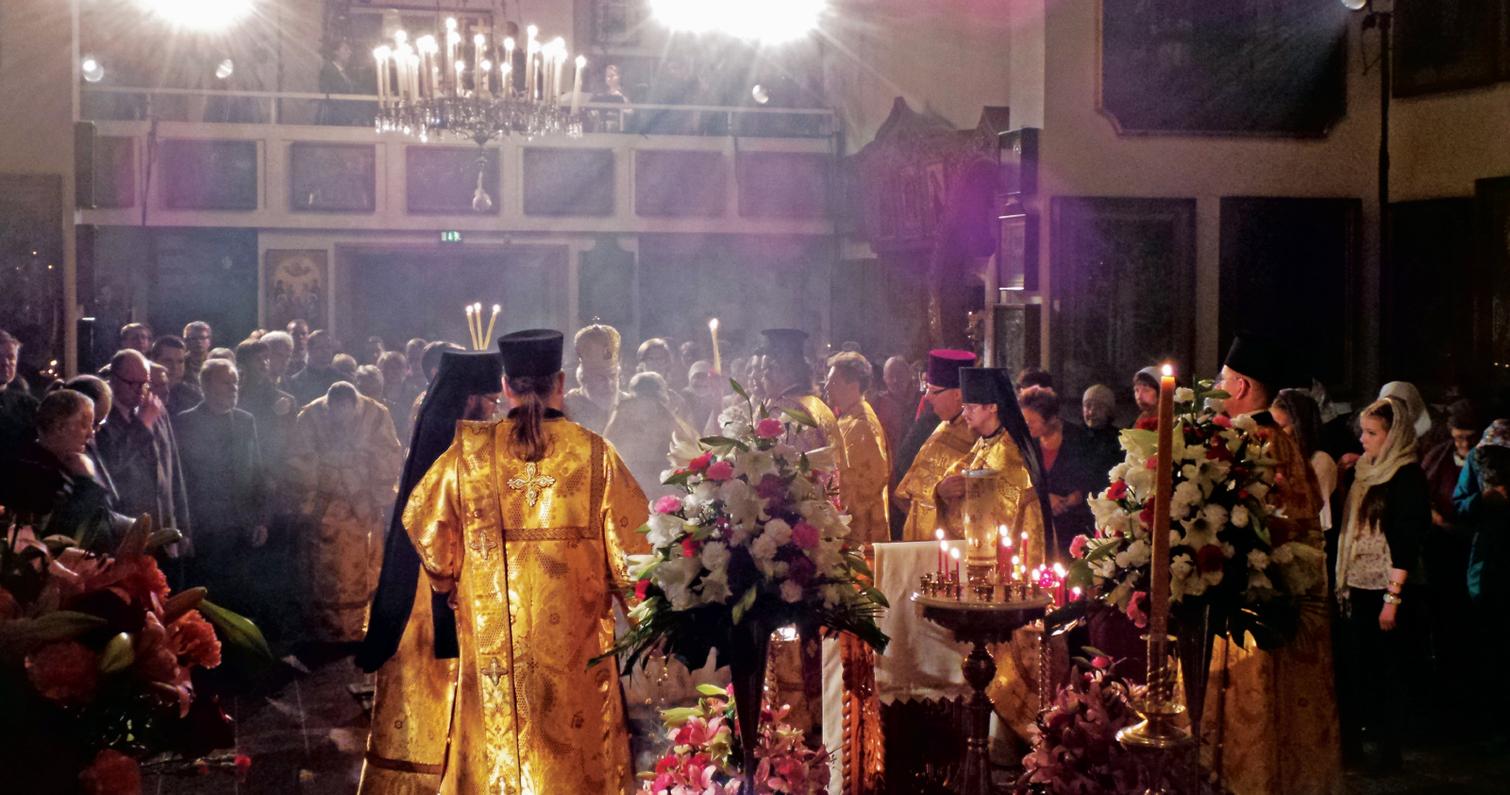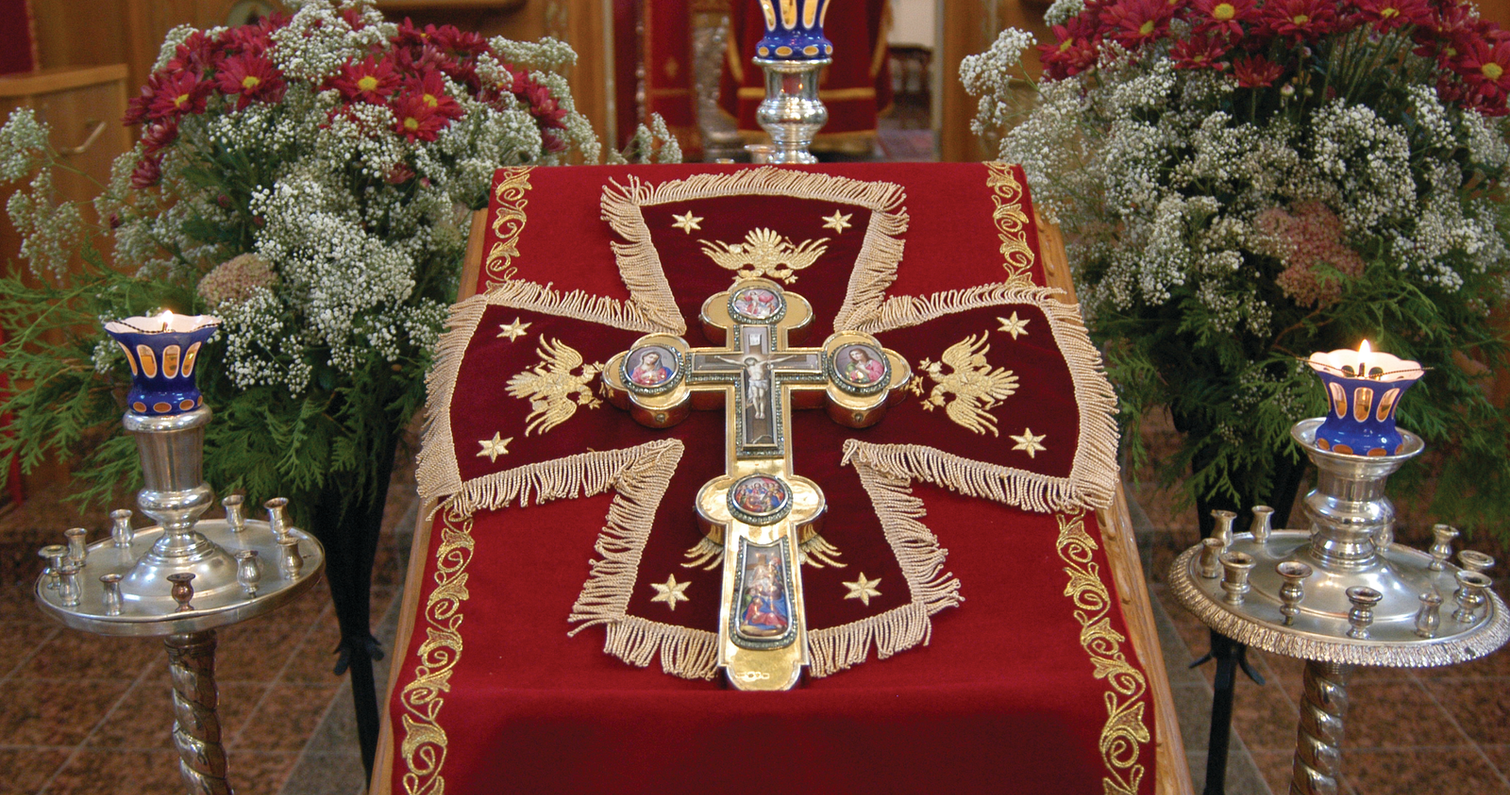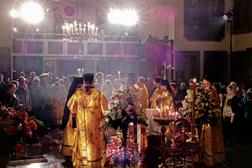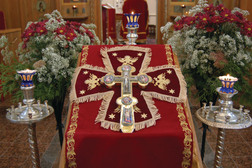Easter (Pascha) is the biggest feast of the church year. The whole essence of the existence of the church is based on the message of this feast. Apostle Paul says: ”And if Christ be not risen, then is our preaching vain, and your faith is also vain."
The commemoration of the events leading to the passion of Christ starts one week before Easter on the Saturday of St Lazarus and Palm Sunday. On the Saturday of St Lazarus the church commemorates the resurrection of Lazarus from the death four days after his death.
On Paml Sunday the church commemorates the riding of Jesus into Jerusalem. On the feast vigil on the eve of Palm Sunday, decorated willow branches, symbolizing the palm leaves, are blessed. Especially children follow the custom of going around to people's homes and wishing them good luck with these decorated and blessed willow branches after the liturgy on Palm Sunday. It is customary to keep the branches in the icon corner until the Ascension, after which they are burned.
The church servives from Monday to Wednesday during the Holy Week are very sorrowful, but at the same time full of hope of resurrection. On the morning of Holy Thursday, the institution of the Eucharist is commemorated, and in the evening the 12 Gospels of Passion are read. During the reading of the 12 gospels the people are standing with candles in their hands.
At the end of the Great Vespers in the afternoon on Holy Friday, the burial shroud of Christ is solemnly carried out of the altar and placed in the center of the church. While the burial shroud is carried out, the people are kneeling with candles in their hands. At the end of the service, the people venerate the burial shroud of Crist by making two prostrations in front of the Holy Shroud, then kissing the Gospel book on top of the burial shroud and then the hands and feet of Christ. After the kissing one more prostration is made.
In the evening on Holy Friday, there is a burial service for Christ in the church. It doesn't have any equivalent in any other Christian churches. At the end of the service the burial shroud of Christ is solemnly carried around the church in a procession.
Holy Saturday is characterised by quiet waiting. In the morning on Holy Saturday Old Testamen prophecies about the resurrection are read in the church. After the liturgy in the morning, the burial shroud of Christ is taken back to altar, and the church will silently wait for the great feast of resurrection.
On Saturday evening, before midnight, the midnight service is read in the dark church, after which we get prepared for the procession. At midnight, the Holy doors are opened, the candles are lit. The procession starts around the church starts. After going around the church, the procession stops in front of the closed doors of the church. The singing of the paschal troparion: "Christ is risen from the dead, trampling down death by death, unto those in the tombs bestowing life" is started. This joyful paschal hymn is repeated endlessly during the paschal night and also during the following 40 days, during the paschal period, when the church commemorates the resurrection of Christ.
